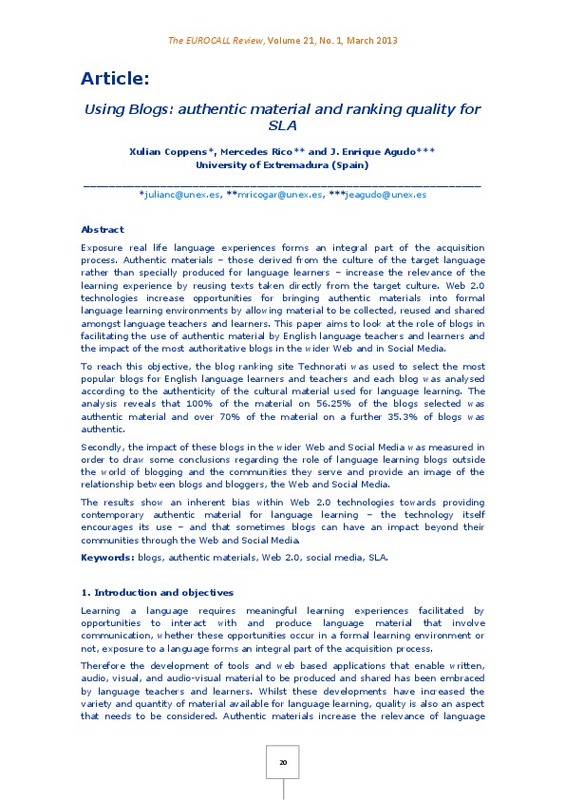JavaScript is disabled for your browser. Some features of this site may not work without it.
Buscar en RiuNet
Listar
Mi cuenta
Estadísticas
Ayuda RiuNet
Admin. UPV
Using Blogs: authentic material and ranking quality for SLA
Mostrar el registro completo del ítem
Coppens, X.; Rico, M.; Agudo, JE. (2013). Using Blogs: authentic material and ranking quality for SLA. The EuroCALL Review. 21(1):20-34. https://doi.org/10.4995/eurocall.2013.10160
Por favor, use este identificador para citar o enlazar este ítem: http://hdl.handle.net/10251/138299
Ficheros en el ítem
Metadatos del ítem
| Título: | Using Blogs: authentic material and ranking quality for SLA | |
| Autor: | Coppens, Xulian Rico, Mercedes Agudo, J. Enrique | |
| Fecha difusión: |
|
|
| Resumen: |
[EN] Exposure real life language experiences forms an integral part of the acquisition
process. Authentic materials – those derived from the culture of the target language
rather than specially produced for language ...[+]
|
|
| Palabras clave: |
|
|
| Derechos de uso: | Reconocimiento - No comercial - Sin obra derivada (by-nc-nd) | |
| Fuente: |
|
|
| DOI: |
|
|
| Editorial: |
|
|
| Versión del editor: | https://doi.org/10.4995/eurocall.2013.10160 | |
| Tipo: |
|








